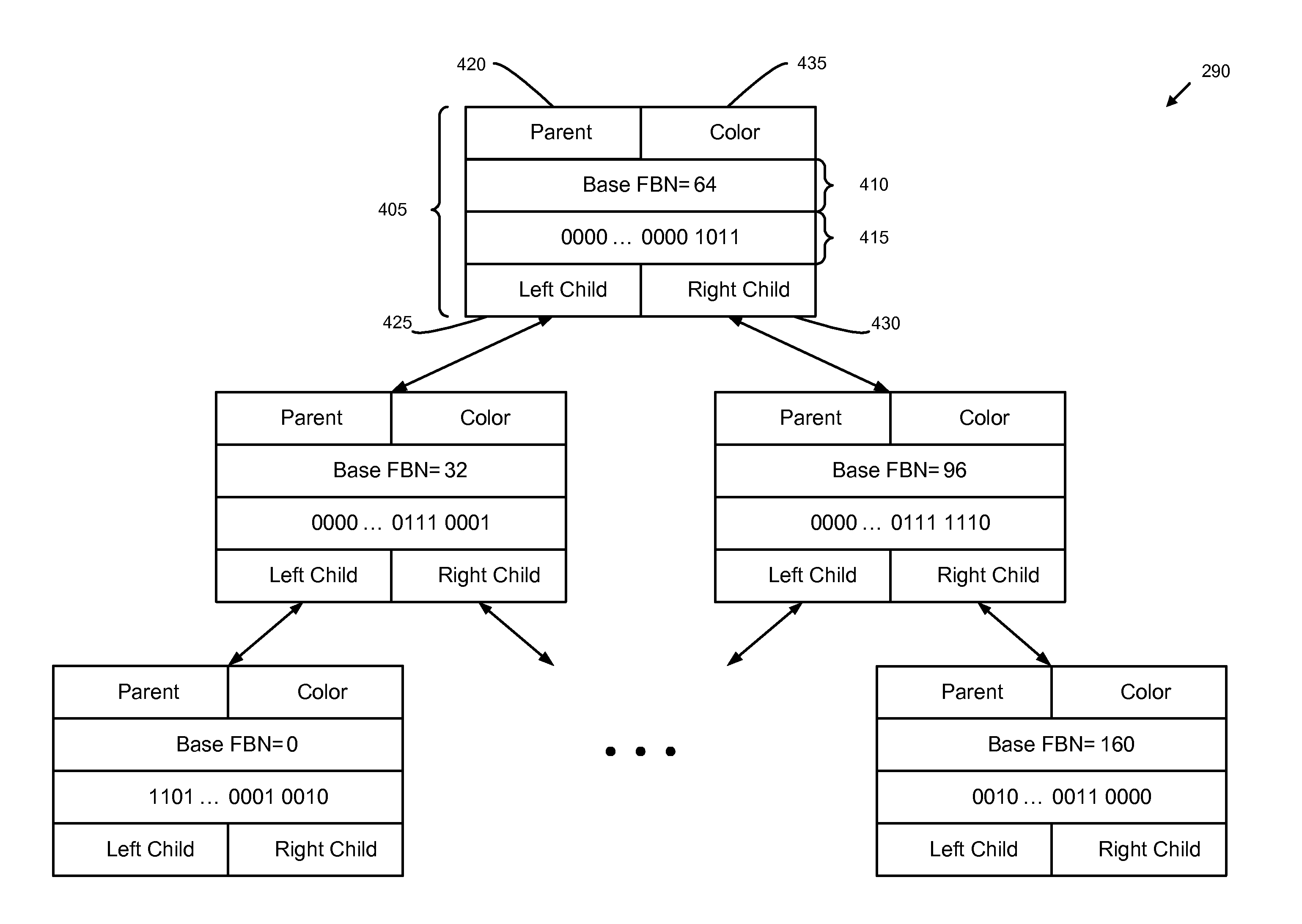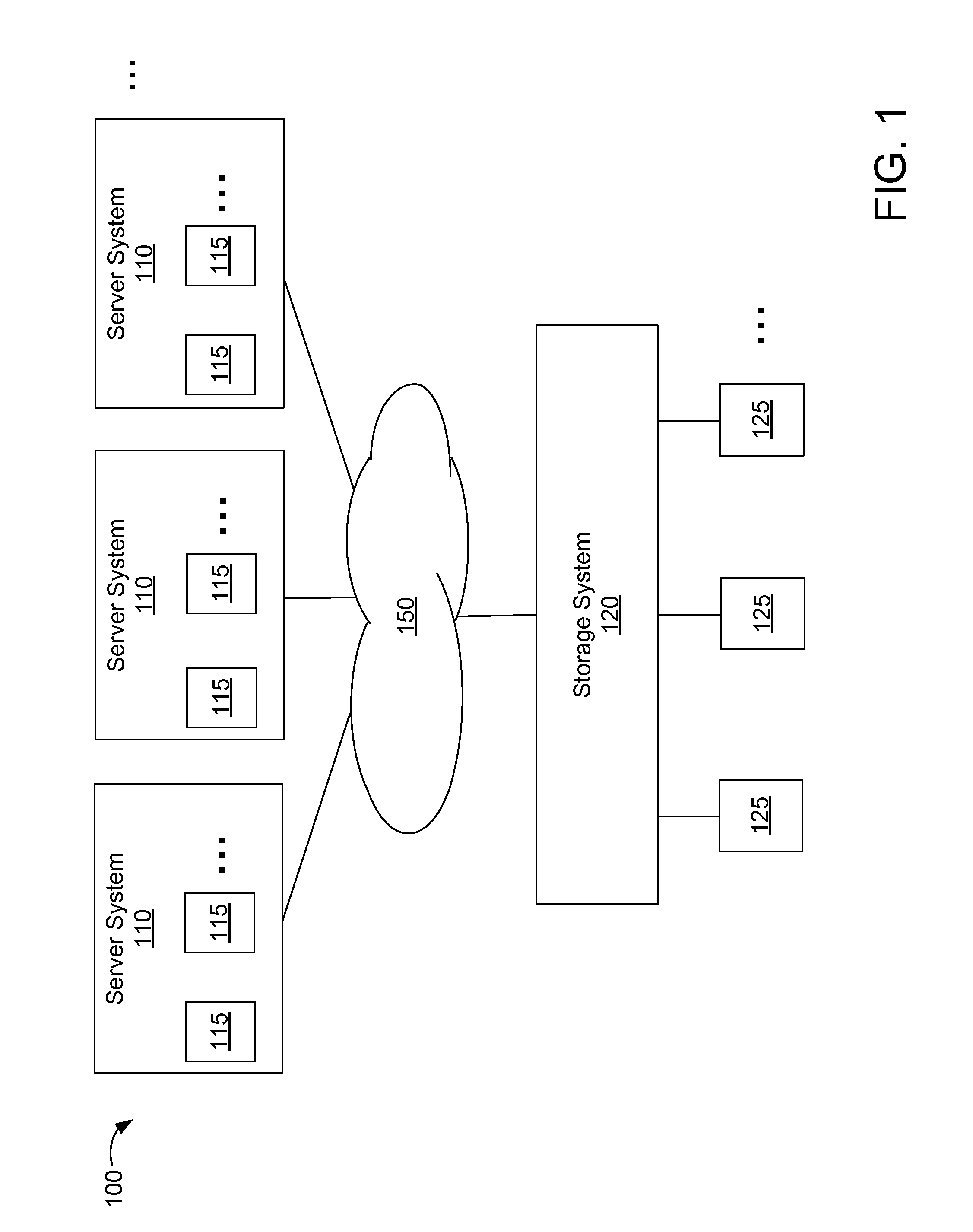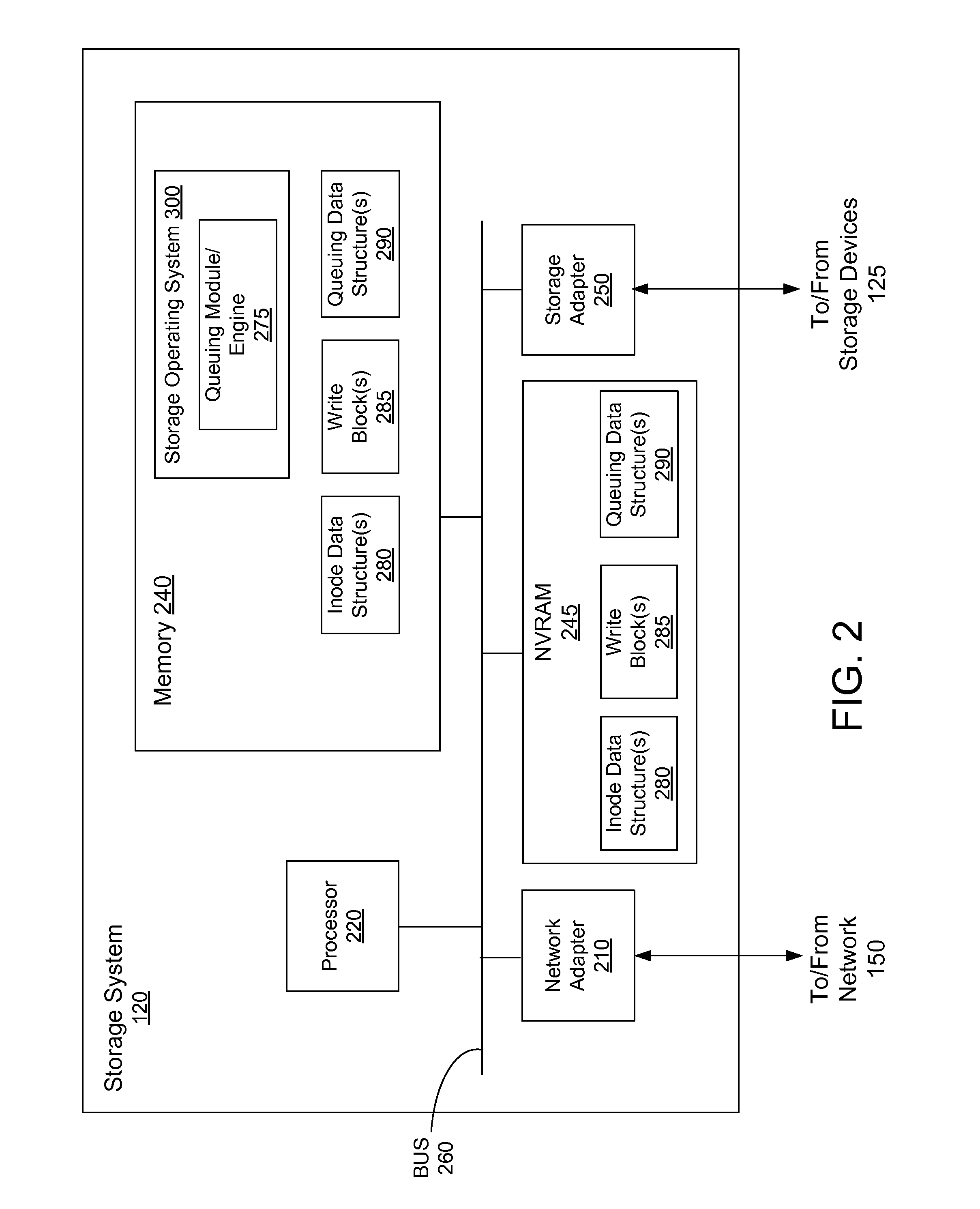Queuing received write blocks for reducing file fragmentation
a write block and file technology, applied in the field of storage systems, can solve the problems of significant read latency, large memory resources for use of bsts in queuing techniques, and significant read latency later, so as to reduce the memory requirements of queuing received write blocks, reduce file fragmentation and read latency, and reduce the effect of memory requirements
- Summary
- Abstract
- Description
- Claims
- Application Information
AI Technical Summary
Benefits of technology
Problems solved by technology
Method used
Image
Examples
Embodiment Construction
[0030]In the following description, numerous details are set forth for purpose of explanation. However, one of ordinary skill in the art will realize that the embodiments described herein may be practiced without the use of these specific details. In other instances, well-known structures and devices are shown in block diagram form in order not to obscure the description with unnecessary detail.
[0031]The description that follows is divided into three sections. Section I describes a storage system environment in which some embodiments operate. Section II describes queuing write blocks using queuing data structures having nodes using a range field. Section III describes methods for using the queuing data structures for queuing write blocks and assigning LBNs.
I. Storage System Environment
[0032]FIG. 1 is a schematic block diagram of an exemplary storage system environment 100 in which some embodiments operate. The environment 100 comprises a one or more server systems 110 and a storage ...
PUM
 Login to View More
Login to View More Abstract
Description
Claims
Application Information
 Login to View More
Login to View More - R&D
- Intellectual Property
- Life Sciences
- Materials
- Tech Scout
- Unparalleled Data Quality
- Higher Quality Content
- 60% Fewer Hallucinations
Browse by: Latest US Patents, China's latest patents, Technical Efficacy Thesaurus, Application Domain, Technology Topic, Popular Technical Reports.
© 2025 PatSnap. All rights reserved.Legal|Privacy policy|Modern Slavery Act Transparency Statement|Sitemap|About US| Contact US: help@patsnap.com



